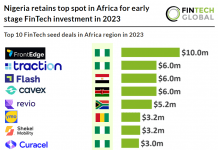Web 3.0 could transform the way cross-border payments work, allowing money to be transferred more seamlessly.
This statement comes from a panel discussion Currencycloud organised in conjunction with the Singapore Fintech Association. The panel was joined by M-DAQ, 2C2P, Cumberland Lab and Currencycloud, where they discussed web 3.0 in payments.
One of the key areas of discussion was around the future of blockchain payments. Currencycloud stated that there are two types of money, tokenised and fiat. While tokenised money has gained a lot of attention through the widespread adoption of cryptocurrency, tokenised money has been around since the start of civilisation, it said. In this type of transaction, use of a token of money must be validated for authenticity before the deal is complete.
On the other side, fiat money is paper money that is made legal tender by a government decree, with its cashless version empowered through banking technology. Every swipe of a card triggers a system of checks to ensure all stakeholders agree to the transaction.
Currencycloud believes web 3.0 will transform tokenised money for the digital age. It said, “With blockchain technology, all information associated with the money is locked-in with a smart contract, showing proof of all parties in agreement. Applied to a peer-to-peer system, it can technically remove the verification layer between the peers, thus cutting out rent-taking by the middle parties.”
Another takeaway from the panel was that blockchain has more uses than P2P. For example, it can be used with central bank digital currencies (CBDCs), which are a digital form of fiat money issued by central banks and operate on private authorised blockchains as opposed to public permissionless ones, which cryptocurrencies use.
It added that central banks are the key beneficiaries as they do not need to overhaul their traditional financial systems and yet could exert a level of control over the currency. A CBDC is traceable and can be inbuilt with functions like a yield or other saving-bearing components. Furthermore, central banks can mandate its transparency, speed and cost.
However, while CBDCs are ideal for some central banks, Currencycloud said, consumers are not concerned with the mechanics of money movement and care more for how quickly, easily and inexpensively they can send money. As a result, the central banks with well-established payments infrastructure are not limiting themselves to CBDCs.
An example of this is the partnership between open banking payment ecosystems, PayNow and PromptPay. They worked together for a real-time cross-border retail payment system to test the feasibility of moving money between e-wallets in different countries.
Currencycloud concluded, “Web 3.0 is a future where money moves seamlessly across borders. Whether this goes on a single route or divergent routes remains to be seen. With each new option now being developed to either solve an existing problem or to fulfil a specific purpose, Web 3.0 will represent a state where long standing challenges in cross-border payment will cease to exist.”
Read the full report here.
Copyright © 2023 FinTech Global











